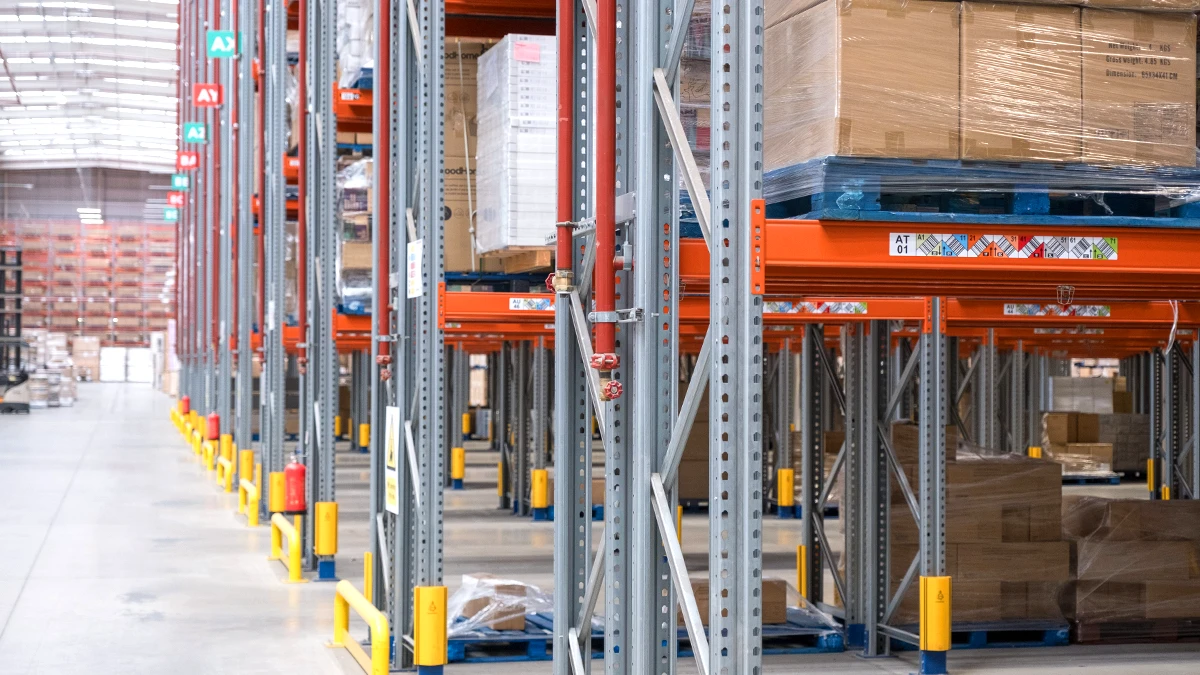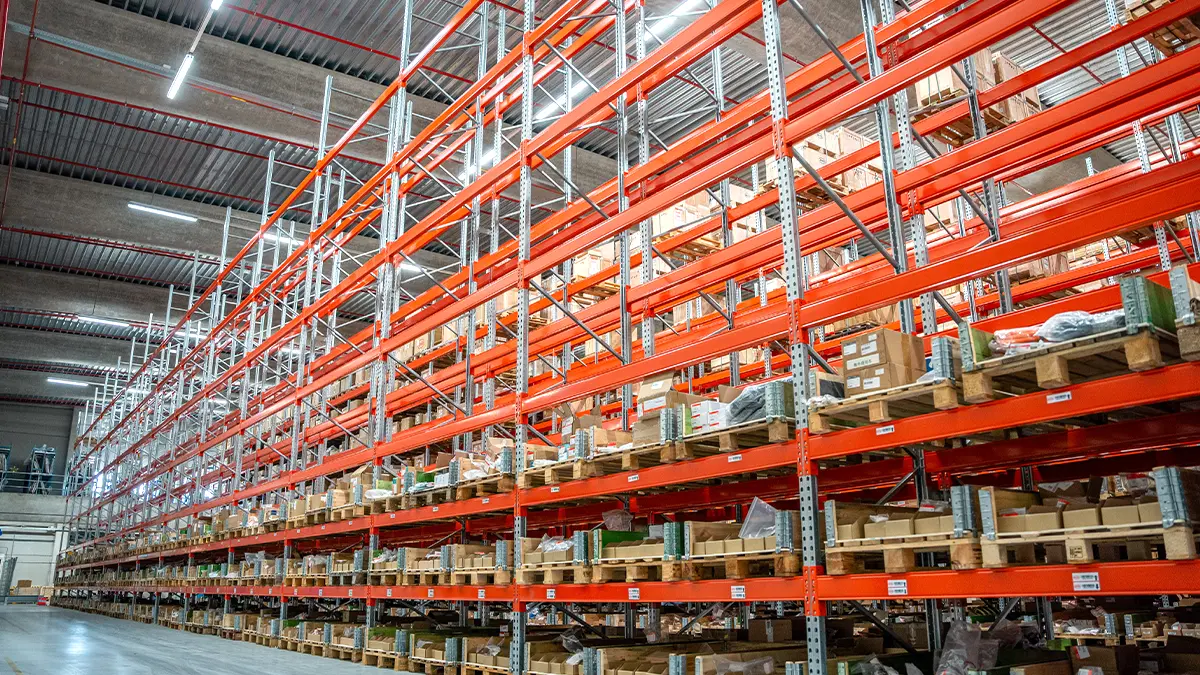The evolution of logistics, mainly due to the modernity of warehouses, has changed the way products are shipped. The need to optimise space has made supply chains far more agile and integrated.
Cross-docking is a logistics method that seeks to streamline the supply chain by eliminating the intermediate storage phase, carrying out an almost direct transfer of products from receipt in the warehouse to the shipment of orders.
In the supply chain, the search for methods to increase the speed and productivity of logistics processes in different work areas has become a key factor for companies in all sectors.
For that purpose, one of the alternatives that can be applied to achieve competitive improvement is cross-docking. We outline below what it consists of, the different ways of implementing it, its main advantages, but also some of its limitations.

What is cross-docking and what is it for?
Cross-docking is an order receipt and preparation technique designed to speed up the movement of products across the supply chain.
The main characteristic is that the goods are unloaded and received, and immediately loaded onto a means of transport for delivery to end customers, with a very short handling time and without requiring a storage stage.
Cross-docking results in such a high level of optimisation that goods will only spend a very short time in the warehouse, so it is not necessary to store them on industrial racking.
It is a technique that helps optimise order preparation efficiency, reducing storage and handling time, in order to achieve faster and more direct distribution of goods.

How does cross-docking work? The 4 phases
The cross-docking process involves preparing and optimising different orders that arrive at the distribution centre, to distribute them immediately and quickly. At this point, the products are classified quickly and sent directly to their final destination, whether it is another warehouse, a point of sale or directly to the customer. Here the warehouse is still necessary, but picking and location management-related tasks make way for a rapid reorganisation of the goods in order to optimise the routes of logistics operators.
Therefore, the objective of implementing cross-docking is to boost the efficiency of inventory transportation management, since product maintenance and preservation costs are saved. Likewise, other main functions include reducing storage times, optimising logistics and improving operational efficiency. In short, this logistics process optimises this supply chain stage by speeding up product receipt and delivery, reducing costs and increasing customer satisfaction.
Cross-docking phases
Developing a successful cross-docking process requires excellent planning and time management. It is therefore necessary to know and correctly implement the phases of this strategy.
- Scheduling of distribution by suppliers. That is, planning the arrival of trucks at the warehouse to avoid errors.
- Receipt of goods in warehouse.
- Recording, inspection and identification of goods received. This step is vital so as not to lose track of the goods, even if they are only in the warehouse for a short time.
- Shipment and consolidation of the goods. The products are repackaged and loaded onto transportation for shipment to the end customer.
What types of cross-docking are there?
This method can be carried out with different unit loads (pallets, cartons...), but there are three main types of cross-docking according to the steps required:
Pre-distribution cross-docking (direct)
It is the fastest and simplest cross-docking model and is characterised by the fact that the unit loads are prepared and organised by the supplier, considering the end customer’s needs, so it is limited to rapid quality control, labelling and classification, and finally transfer to the delivery vehicle. Hence, the cross-docking process is limited to receiving and shipping the goods without further intervention by the warehouse operators.
Consolidation cross-docking (direct)
Unlike the previous model, in consolidation cross-docking the goods are handled by warehouse staff and organised in the warehouse to adapt them to the end customer’s requests and then distribute them. For this reason, the unit loads are organised and transported on pallets to a storage or conditioning area, designated to perform these tasks, where they are examined and adjusted to the requested orders. They can depalletise the load, separate it and reorganise it and palletise it again before placing it on the delivery vehicles. It is very common to find it on platforms in the large-scale retail or automotive sector.
Hybrid cross-docking
This type of cross-docking is the most flexible and complex since it allows us to tackle a greater variety of situations but it also implies greater organisation, coordination and efficiency of all tasks connected to this operation to achieve the desired results. Orders are prepared in the conditioning area and are separated between those that do not need to be conditioned or adapted and those that do, moving the latter to a preparation or temporary storage area.
In other words, the distribution of goods is carried out by combining arrived products with other previously stored ones. When the cross-docking products part is received, it is combined with the stored part, and they are issued immediately for distribution together. Although it is a very useful technique that can help deal with possible unforeseen events, it is also somewhat more complex than the previous ones, which is why it requires greater precision.

Limitations when applying cross-docking
Although cross-docking is a very efficient logistics strategy that makes for a far more agile supply chain, it is a system that is difficult or impossible to implement for many companies since it requires a very high level of synchronisation and a perfect flow of information between the different areas of the company.
Below are some of the main weaknesses or difficulties of this method:
- Need for total synchronisation
It requires absolute coordination between suppliers, the distribution or cross-docking centre and end customers. Any mismatch in the information or product inflow and outflow times can affect the efficiency of the process.
- Risk of interruptions in the supply chain
Any slight delay in the delivery of products, problems in the quality or quantity of the goods received, or changes in demand or supply, can generate distribution delays and affect cross-docking effectiveness.
- Need for adequate infrastructure and technology
It requires specialised facilities, an efficient transportation network and advanced software to efficiently handle large volumes of goods. The lack of these capabilities can restrict the successful implementation of cross-docking.
- High implementation costs
The initial setting up of a work site for cross-docking may require significant initial investments in infrastructure, personnel and technology. This can be an initial barrier to implementation in some companies, especially those with limited resources.
- Vulnerability to changes in demand
If there are significant and unforeseen variations in product demand from end users, the cross-docking system may struggle to quickly adapt to these sudden changes.
If, for example, it is not possible to immediately issue the received goods, the cross-docking method won’t work, and a conventional storage logistics method should be used.
Main advantages of cross-docking
Like all techniques, cross-docking can be very useful depending on the type of company. Being a technique that is implemented in a matter of hours, it is normally widely used in companies that handle products with a very short life cycle, such as perishable products, or orders with a very short delivery time, helping to improve efficiency and productivity within the supply chain. Including cross-docking in the supply chain is a very good idea to consider since it can offer the following advantages:
- Cost and storage space saving
The cross-docking technique helps save long-term logistics costs, including those related to storage and inventory management, but also to the transportation service, because it allows truck routes and stops to be optimised by reorganising the goods in the warehouse. It also reduces both personnel expenses and those related to storage space, distribution machinery, inventory tasks, picking... being a particularly fast and profitable distribution model.
- Reduces the number of operations and load handling
The implementation of cross-docking eliminates several goods processing stages that are more common in traditional logistics. This reduces load handling and the relocation of products, resulting in fewer problems that may occur during the process. Indeed, by reducing several goods processing stages, the possibility of deterioration, accident or risks, to which the load may be exposed in the warehouse, is reduced.
- Reduces delivery times agreed with the customer
One of the many advantages of the cross-docking technique is the reduction in delivery times. In this work technique, the products are not stored in the usual way, so several steps in the traditional chain are eliminated, optimising storage time and saving time in implementing the entire process, offering a better service to the customer. Likewise, time management is improved because it is easier to calculate how long it takes for an order to be distributed again.
- Improves the cost effectiveness and performance of the team
After eliminating or considerably reducing several of the steps in the traditional process, product handling is reduced, which helps improve team performance and allows remaining personnel to be assigned to other more productive tasks.
- Increases the sustainability of the warehouse
It increases the sustainability of the supply chain: resources are not wasted in transportation because the classification of goods allows for better planning of transportation routes. Additionally, no extra warehouse space is dedicated to storing these goods. This helps to significantly reduce the carbon footprint of logistics management.
In conclusion, cross-docking is a logistics strategy that eliminates the storage phase, directly connecting unit loads from receipt to shipment. However, despite its efficiency and time advantages, cross-docking has limitations and difficulties when it comes to its actual implementation.
In AR Racking, as experts in designing and implementing storage systems, we offer efficient alternatives, in case it is not viable to implement cross-docking, with different types of racking that optimise the supply chain, maximise the storage capacity and facilitate agile and effective product distribution.




